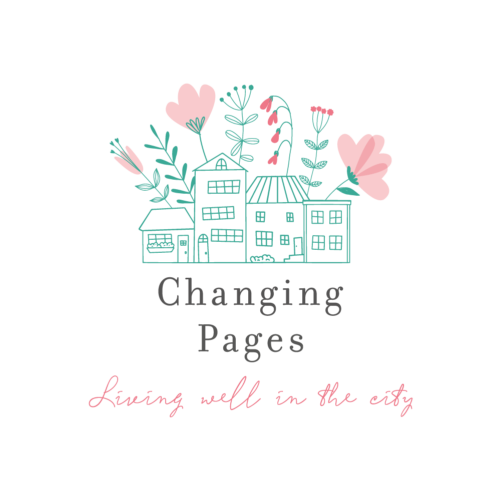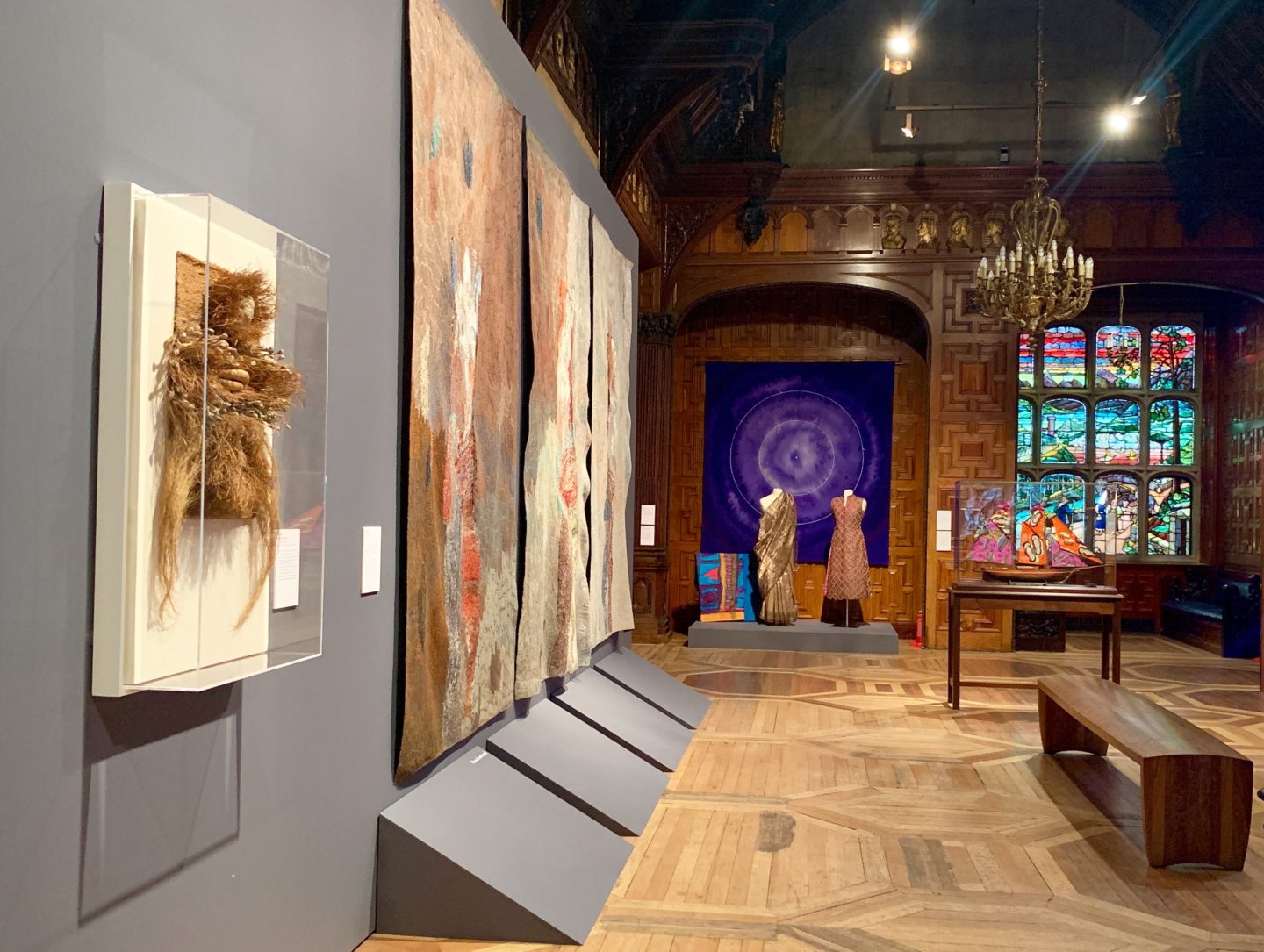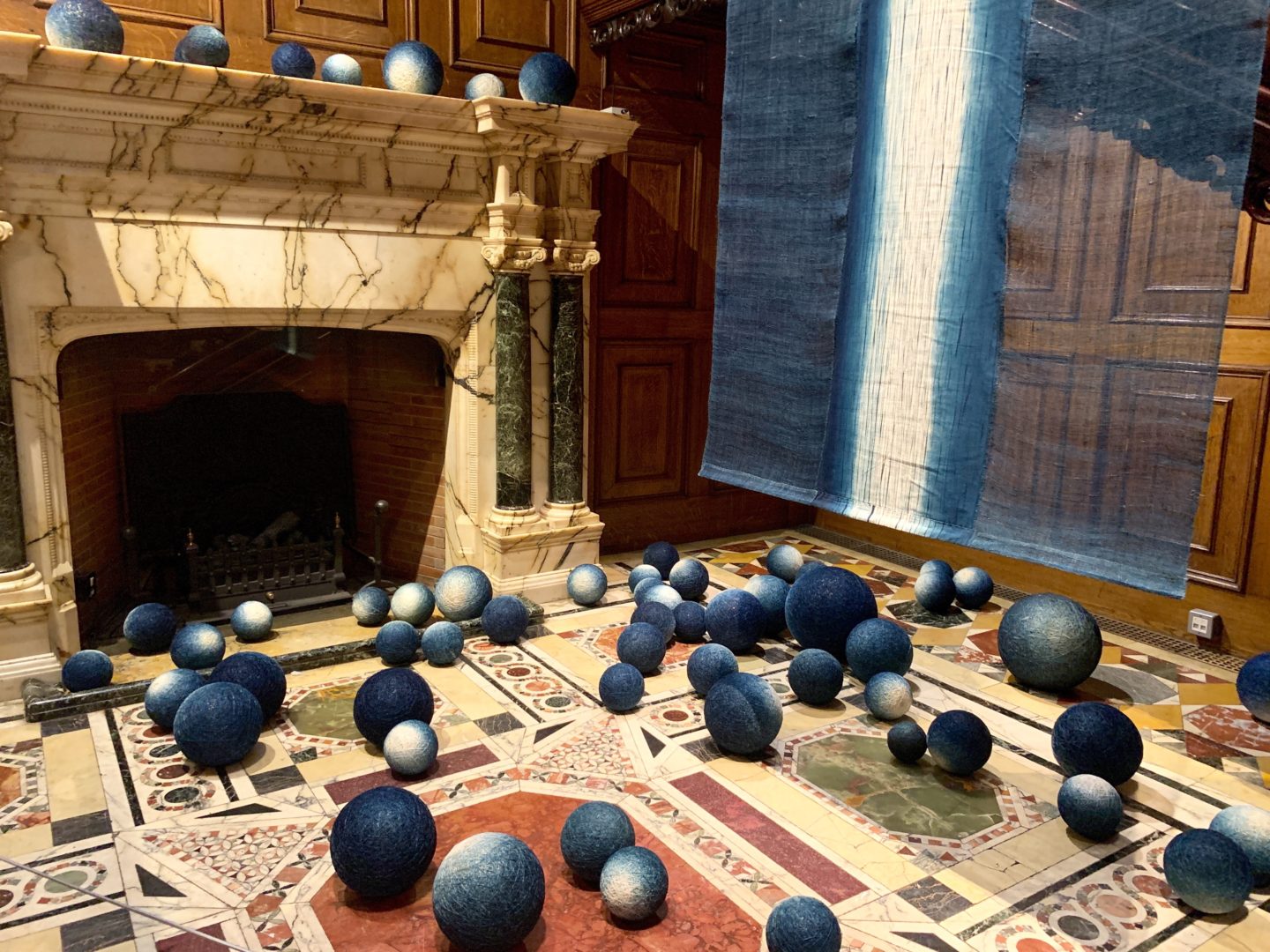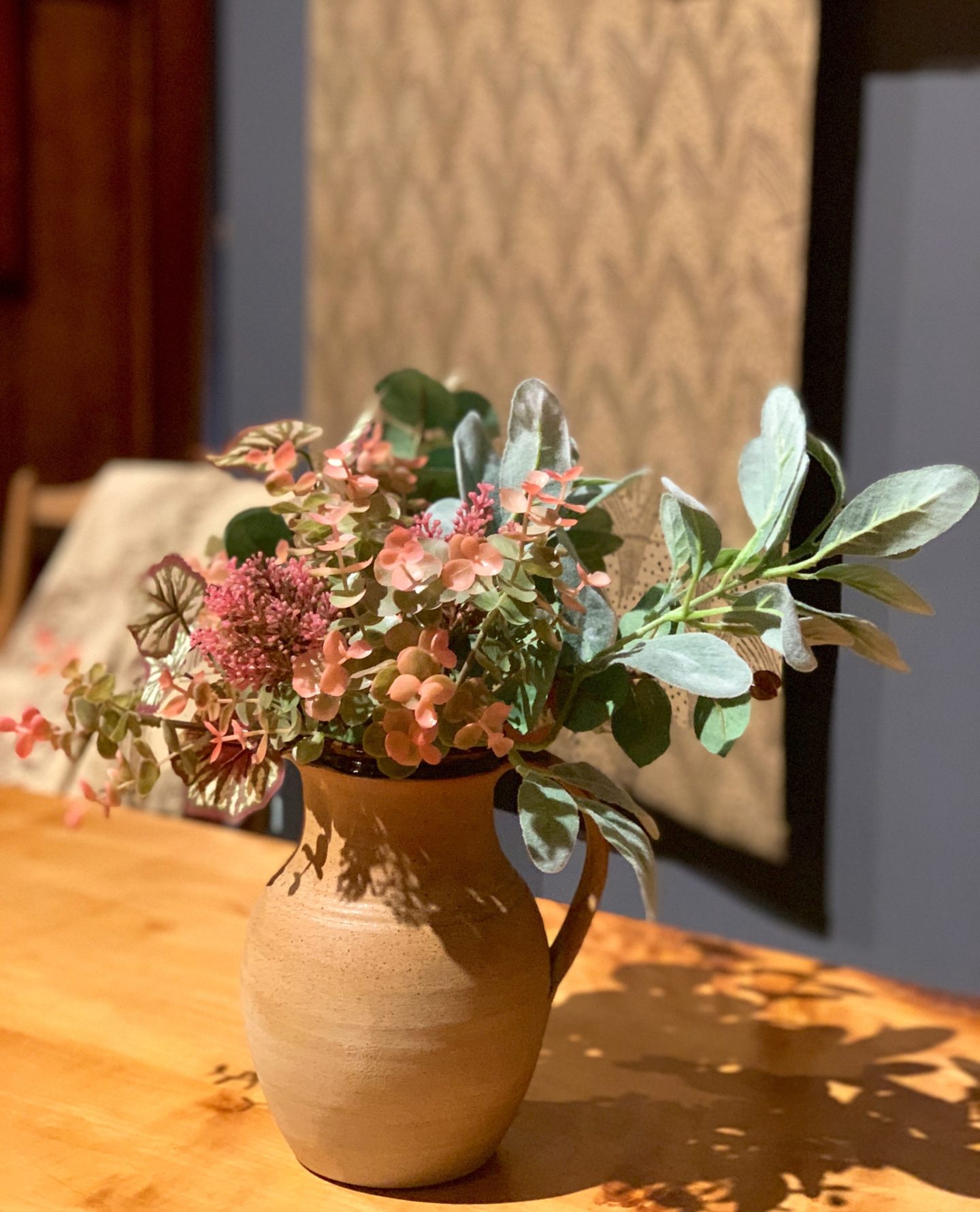Two Temple Place
Two Temple Place is one of those beautiful hidden London gems that when you discover it for yourself you feel you have become part of an exclusive club. Torn between wanting to keep it squirrelled away and the need to shout about it from the roof tops is the dilemma that those of us who have been lucky enough to discover it face. Just moments away from Temple Tube Station resides this grande dame of buildings. The late Victorian mansion was designed as an estate office for Lord William Waldorf Astor. No expense was spared and the resulted is a rich and luxurious interior, which as is it happens is a perfect canvas on which to display the yearly exhibitions it now houses. For three months of every year, the general public are able to visit 2 Temple Place for free to enjoy the current offering of art and design.
I came across 2 Temple Place by happy accident some time ago now and the current exhibition Unbound: Visionary Women Collecting Textiles is the third exhibition I have had the privilege to visit.
Unbound: Visionary Women Collecting Textiles
The Premise for this exhibition is an interesting one. Taking the work and textile collections of seven groundbreaking women from the late 1800’s until the present day, using them to illustrate the 20th century, a period of significant change. The women’s rights movement, education, cultural diversity and arts and crafts are all addressed through these women and these collections.
During this period in history it was much more usual for men to be collectors. Usually wealthy men with a limitless income who could travel the globe in pursuit of their hobby. The woman as a collector was much less common, and omen who did collect were thought of as slightly eccentric or odd.
Edith Durham, (1863 –1944), Louisa Pesel (1870 – 1947), Olive Matthews (1887 – 1979)
The exhibition is helpfully laid out in a chronological order and begins downstairs with the earlier collectors, Edith, Louisa and Olive. Three early collectors of textiles. Each of these women had a small income on which to help them grow their collections but were by no means wealthy. It would seem that they used what they had wisely as each of them built an impressive collection.
Edith was entranced by the Balkans and after years of caring for a sick mother took herself on a trip to Montenegro. It was here she met the Balkan people whose culture and history went on to inspire her art and her collection. She nursed the sick during wars in the first part of the 1900’s and became a spokes person for the marginalised people in that part of the world. She used her experiences and knowledge to gather a worthy collection of textiles.
 Louisa was an artist. She had trained in Greece and was fascinated by pattern. In her determination to ensure that ‘stitches’ and this craft would not be loss she worked with refugees and shell shocked soldiers using ‘stitching as therapy’.
Louisa was an artist. She had trained in Greece and was fascinated by pattern. In her determination to ensure that ‘stitches’ and this craft would not be loss she worked with refugees and shell shocked soldiers using ‘stitching as therapy’.
Olive was encouraged by her father to collect 18th and 19th century costumes. She was just 12 when she began her collection. Her love of technical accomplishment influenced her collection and she eventually founded a museum space to house her admirable collection.
There are gowns to drool over, shoes to google at and pages from work books to linger over in this part of the exhibition.
Murial Rose 1897-1986 and Enid Marx 1902-1998
The Library exhibits the work of Murial a galleriest and Enid, a maker and designer. Enid developed an enviable collection of folk art and enjoyed living with her collection all around her. Murial’s interest was around how colour and pattern could work in a home environment. There are some lovely examples of fabrics used for interiors in this part of the exhibition.
Dr Jennifer Harris (b.1949) Nima Poovaya-Smithb (b.1953)
The glorious space in the Great hall is given over to the the collections of Jennifer and Nina, two current day curators and academics. Dr Harris has collected some major scale artworks which showcase a diverse and mixed media. There are large and contemporary installations here along side two stunning sari’s from Nima’s collection which reflects the diversity of Bradford’s population and textile industry. There is much to stop and stare at here.
What ‘Unbound’ has so cleverly achieved is to have chosen 7 pioneering and diverse women collectors. Each of the women featured were forward thinking intelligent women and yet unless you have a particular interest in textiles I suspect fairly unknown. These Women saw potential in textiles and used their creativity and insight to develop a collection of work which enabled them to look to the future.
Why You Should Visit.
I loved this exhibition firstly on a purely aesthetic level. The fabrics and clothes featured are sumptuous and rich and colourful. However I almost loved it more for the stories of the women that are told here. Brave, innovative women who were not afraid to be set apart. And if I had to chose a favourite exhibit? I think it would have to be the dyed hemp polystyrene balls by Hiroyuki Shindo which sit so beautifully at the foot of the grand staircase!
This cleverly curated exhibition is a joy and one I really want to return to. I truly believe this is one of the most beautiful venues in London, so even if you are not interested in textiles, I highly recommend a visit to enjoy the polished, sweeping staircases, breathtaking rooms and fabulous chandeliers. There also happens to be a lovely cafe and very temptingly put together gift shop which on their own are worth a trip on the district line for.
The Exhibition is open from now until 19th April 2020. Entry is free.
Check the Two Temple Place Website for opening times and special events.









